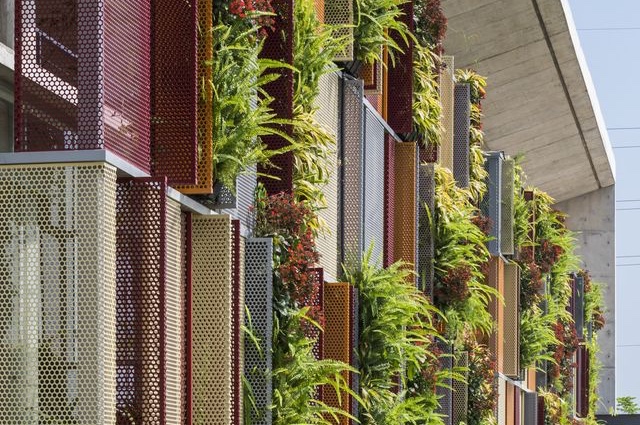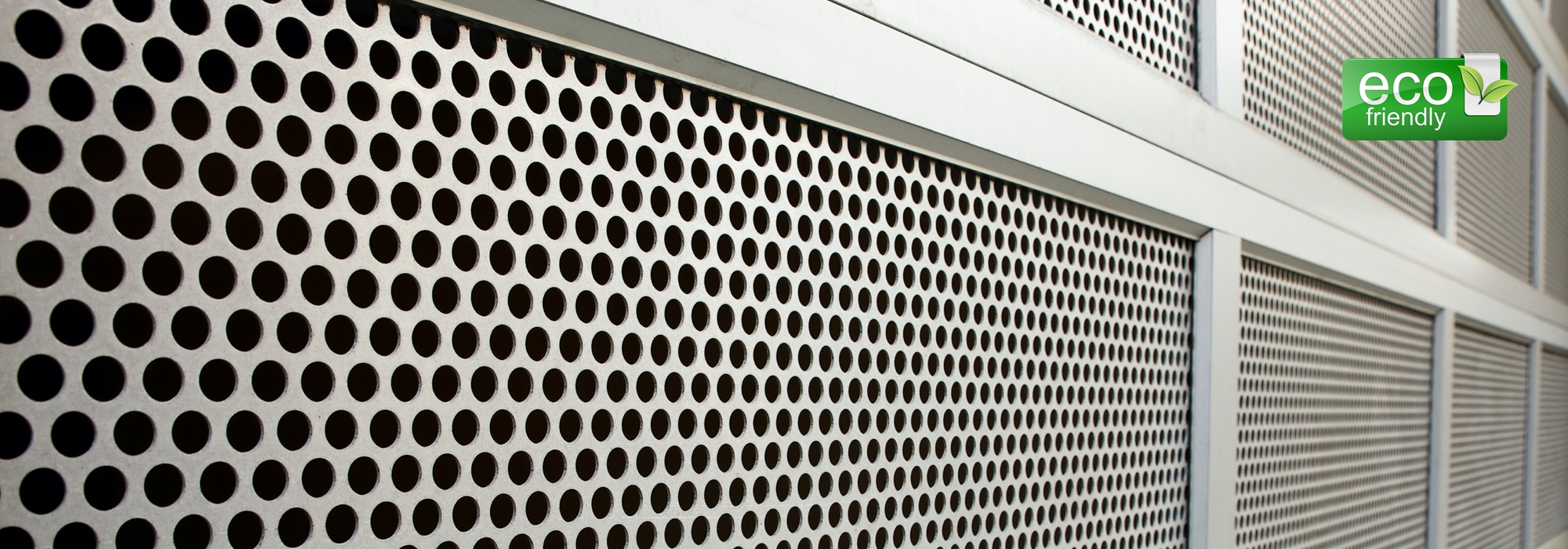Incorporate the principle of green design into your projects as this creates a richer value system.
The advantages of green design are long-term and extensive… innovative product, lower energy consumption, lower costs, use of recycled materials, recyclability…
Metal is the greenest material

Perforated sheets comply with the LEED standard
In 1994, the United States Green Building Council (USGBC), a non-profit organization, began the LEED standard for green building certification.
LEED (Leadership in Energy & Environmental Design) is a certification program for buildings, houses and communities. There are five different categories for which a LEED certificate is awarded:

Within each of these categories, it is necessary to meet certain prerequisites for the facility to be a holder of LEED certification.
Each category is awarded a number of points (location and transport, use of sustainable building materials and waste reduction, more efficient use of water, better energy performance of buildings, sustainable locations that reduce the impact on ecosystems and water resources, indoor quality, innovation and regional environmental priorities).
When it comes to sustainable settlements, scoring is based on location (which should promote efficient transport options and open space), design (which connects the settlement with surrounding communities), green infrastructure (which reduces the environmental consequences of construction and operation of facilities and infrastructure) .
The key perforated sheet metal products recognized by the LEED standard as environmentally friendly are perforated sunshades, facade panels, ceilings, walls and fences.
Metal is mostly produced from recycling, perforated sheets and products can be almost completely recycled.
By using perforated sheet metal, in addition to the aesthetic impression, you also achieve direct savings in energy consumption and reduce noise.
Perforated sheets and WEEL standard
The International WELL Construction Institute (IWBI) is the leader of global change in the way we build and arrange living space.
In 2014, the organization developed the WELL construction standard, all with the aim of improving comfort, health and living conditions.
Perforated sheets are very useful for improving the quality of air and water, they help control noise, excessive heating, their exceptional appearance and beauty are soothing.
Living in harmony with nature… perforation and BIOFILIC DESIGN.
Some examples of the use of perforated sheet metal in biophilic design:
LIGHT
perforated sheet metal allows unobstructed movement of natural light indoors.
By using perforated panels, sunshades, fences, you can control the light using both dynamic and diffused light as needed.
SOUND
reduce noise and clog the space… perforated sheet metal is the optimal choice for good room acoustics because it absorbs sound.
AIR FLOW
perforated sheet metal allows natural movement of air in the building.
Due to the different density of the openings, the air movement exists but is not too strong.
BIOPHILIC FORMS AND MOTIVES
perforated sheet metal allows architects to form different shapes and motifs through which we visually connect with nature, all with the aim of better health and satisfaction of living.
Perfom is dedicated to the ecology and practice of green design.
We improve our processes every day by trying to be efficient. Most of our waste is completely recycled (metal, paper, cardboard, plastic…)
Our products are part of the green world… choose a green supplier, choose Perfom.
Use our online form to order all our products in a simple and fast way.
Očekujte brz odgovor sa svim neophodnim informacijama vezanim za vašu porudžbinu.



